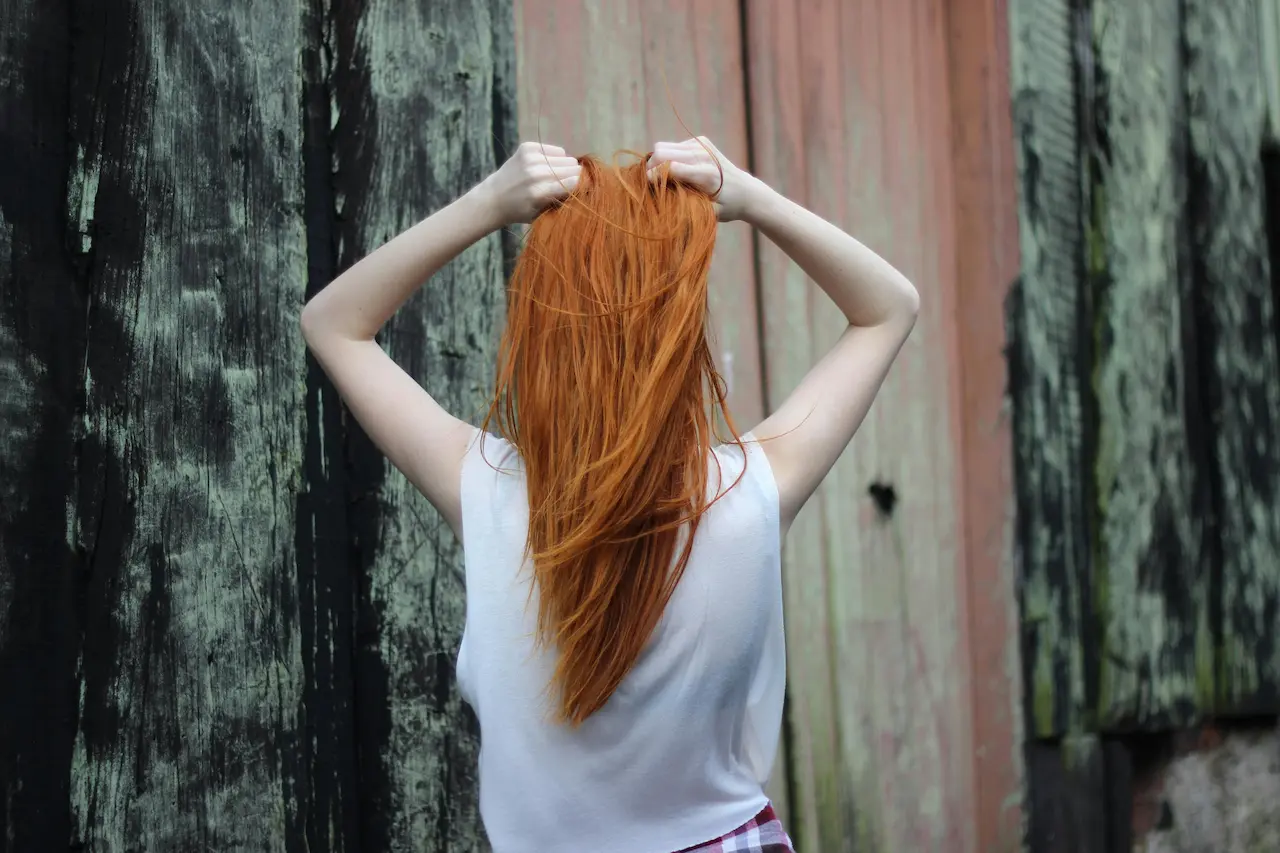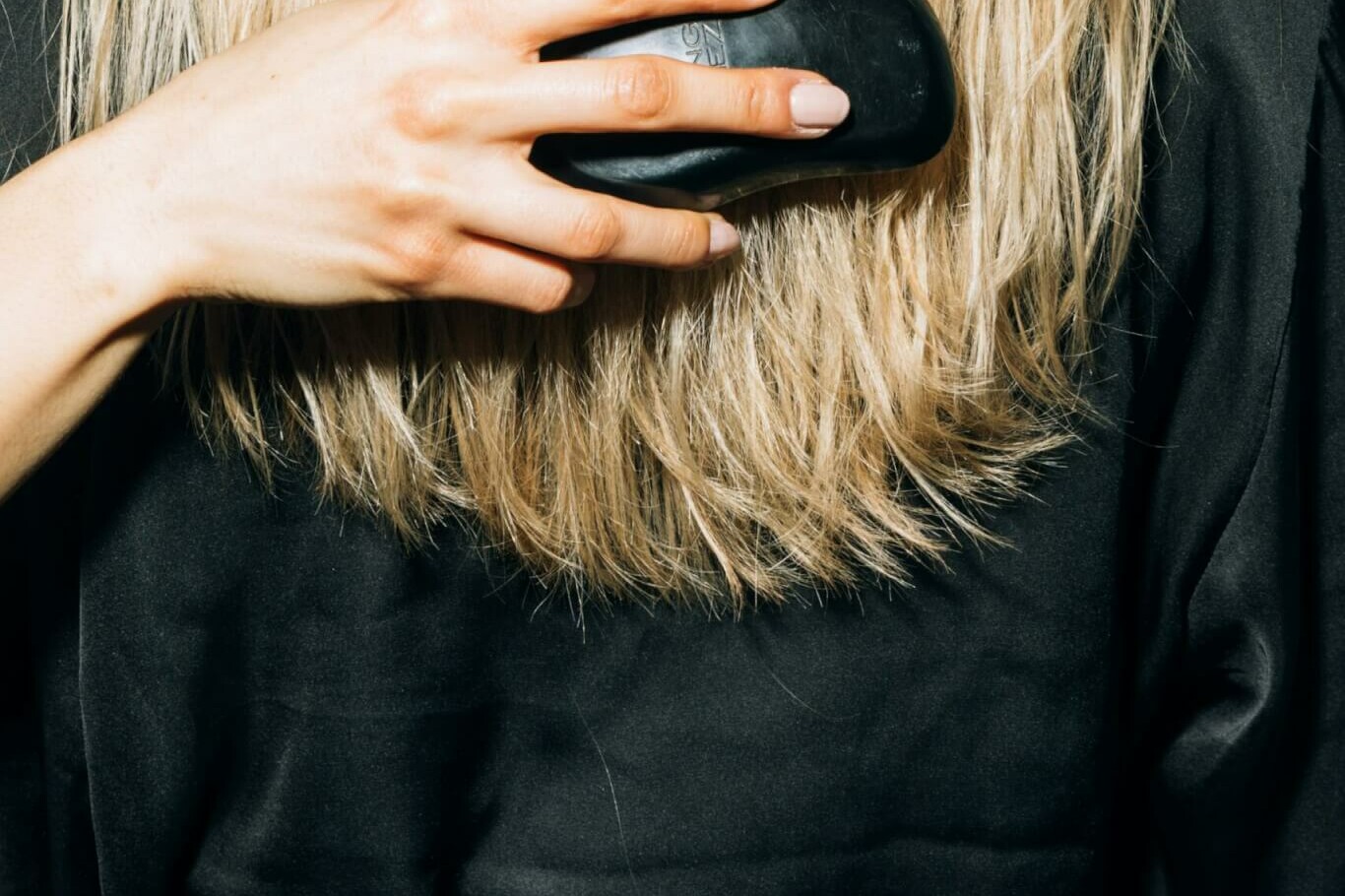Understanding the Structure of Wet Hair
To fully appreciate why wet hair is more vulnerable, it’s important to understand a bit about hair’s structure. Each strand of hair is made up of three layers: the cuticle, cortex, and medulla.
- The Cuticle: This is the outermost layer, composed of overlapping cells (like shingles on a roof) that protect the inner layers. The cuticle is responsible for your hair’s shine and smoothness when it’s healthy.
- The Cortex: The middle layer, which provides strength and structure to the hair. The cortex contains melanin, which gives hair its color, and it’s also where chemical treatments like dyeing and perming take effect.
- The Medulla: The innermost layer, which is soft and fragile. Not all hair types have a medulla, but when present, it provides some structure and volume.
When your hair is dry, the cuticle layers lie flat, protecting the inner cortex. However, when your hair gets wet, it absorbs water and swells. This swelling raises the cuticle layers, making the hair shaft rougher and more susceptible to damage. The cortex also becomes softer and more elastic, but this elasticity is a double-edged sword—it can stretch more easily, but it’s also more likely to snap under tension, such as when you brush or comb it.
The Risks of Brushing Wet Hair
Given the weakened state of wet hair, brushing it can be particularly risky. Here’s why:
- Increased Elasticity and Breakage: Wet hair is more elastic, meaning it stretches more than dry hair. While this might sound like a good thing, it’s actually problematic. When hair stretches too much, it can exceed its elasticity limit and snap. Brushing wet hair can pull and stretch the strands to the point of breakage, especially if you’re using a brush that’s not designed for wet hair.
- Cuticle Damage: Since the cuticle is raised when hair is wet, it’s more prone to damage from brushing. The rougher texture caused by raised cuticles can lead to friction, which results in hair breakage, split ends, and frizz. Over time, this damage accumulates, leading to hair that looks dull, feels rough, and is difficult to manage.
- Tangled Hair: Wet hair tends to tangle more easily because the strands are swollen and stick together. Brushing through these tangles while your hair is wet can lead to more breakage, as you’re likely to apply more force to get through the knots.
- Weakened Hair Integrity: The repeated act of brushing wet hair can weaken the hair’s integrity over time. This means that even when your hair is dry, it might become more prone to breakage and damage because of the cumulative effects of brushing while wet.
How to Care for Wet Hair: Tips and Best Practices
While it’s clear that wet hair is more vulnerable to damage, it’s also true that sometimes you need to detangle your hair while it’s wet—especially if you have curly or textured hair, which can be more prone to tangling when dry. The key is to handle your wet hair with extra care. Here are some best practices for managing wet hair to minimize damage:
1. Pat, Don’t Rub: Drying Your Hair Gently
After washing your hair, the way you dry it can set the tone for how much damage you might cause. Instead of roughly rubbing your hair with a towel, which can lead to friction and breakage, gently pat or blot your hair dry. Using a soft microfiber towel or an old t-shirt can also reduce friction and help preserve the integrity of your hair.
2. Use a Wide-Tooth Comb or a Wet Brush
If you need to detangle your hair while it’s wet, opt for a wide-tooth comb or a brush specifically designed for wet hair. These tools are gentler and designed to glide through wet strands with less resistance, reducing the likelihood of breakage. Start detangling from the ends of your hair and work your way up to the roots, taking your time to avoid tugging or pulling.
3. Apply a Leave-In Conditioner or Detangling Spray
Before you start detangling, apply a leave-in conditioner or a detangling spray. These products can help smooth the hair shaft, making it easier to comb through knots without causing damage. They also provide an extra layer of protection, keeping your hair hydrated and more resilient.
4. Avoid Heat Styling on Wet Hair
Heat styling tools like blow dryers, straighteners, and curling irons can cause significant damage if used on wet or even damp hair. The heat can cause the water inside your hair shaft to expand rapidly, leading to hair breakage and a condition known as “bubble hair.” Always ensure your hair is completely dry before using heat styling tools, or better yet, let your hair air dry whenever possible.
5. Consider Protective Styling
Protective styles like braids, twists, or buns can help minimize tangling and protect your hair from damage while it’s wet. These styles keep your hair secure and reduce the need for brushing or combing. They’re particularly useful if you’re air drying your hair or if you have to go out with damp hair.
6. Wait Before Brushing
If you can, allow your hair to partially or completely air dry before brushing. Hair is at its weakest when fully wet, so giving it time to dry can help restore some of its strength before you run a brush or comb through it. If you have curly or coily hair, you might need to detangle while your hair is still wet, but be sure to follow the other tips for gentle care.
Embrace Healthier Hair Habits
Understanding the risks of brushing wet hair is the first step toward healthier hair care practices. By taking extra care when your hair is wet, you can prevent unnecessary damage, keep your hair strong and resilient, and maintain its natural shine and smoothness. Healthy hair is not just about the products you use, but also about how you handle and treat your hair daily.
As you incorporate these gentle hair care practices into your routine, you’ll likely notice a significant improvement in the look and feel of your hair. Fewer split ends, less frizz, and stronger, more vibrant strands are all within reach when you treat your wet hair with the care it deserves. So next time you step out of the shower, remember to handle your hair with love and care, knowing that it’s at its most vulnerable—and also at its most deserving of your attention.
By following these tips, you can enjoy strong, healthy, and beautiful hair, free from the damage that can come from brushing it when wet. Your hair is worth the extra effort, and the results will speak for themselves. Happy hair care! 🌟
#WetHairCare #HairHealth #HealthyHairHabits #ProtectYourHair #HairCareTips #HairBreakagePrevention #NaturalBeauty #HairWellness #StrongHair #SelfCare #HairCareRoutine #LoveYourLocks #GentleCare
Related Articles
September 6, 2025
Scalp Barrier 101 — How to Rebuild What Over-Cleansing Breaks
Your scalp is more than just the skin under your hair — it’s a living…
November 15, 2024
The Art of Detangling: How to Protect Your Wet Hair from Breakage and Split Ends
Detangling wet hair is a common part of many people’s hair care routine, yet…
November 12, 2024
The Hidden Risks of Dry Shampoo: How Overuse Can Impact Your Scalp Health and Hair Growth
Dry shampoo has become a beauty staple for many people, offering a quick and…




